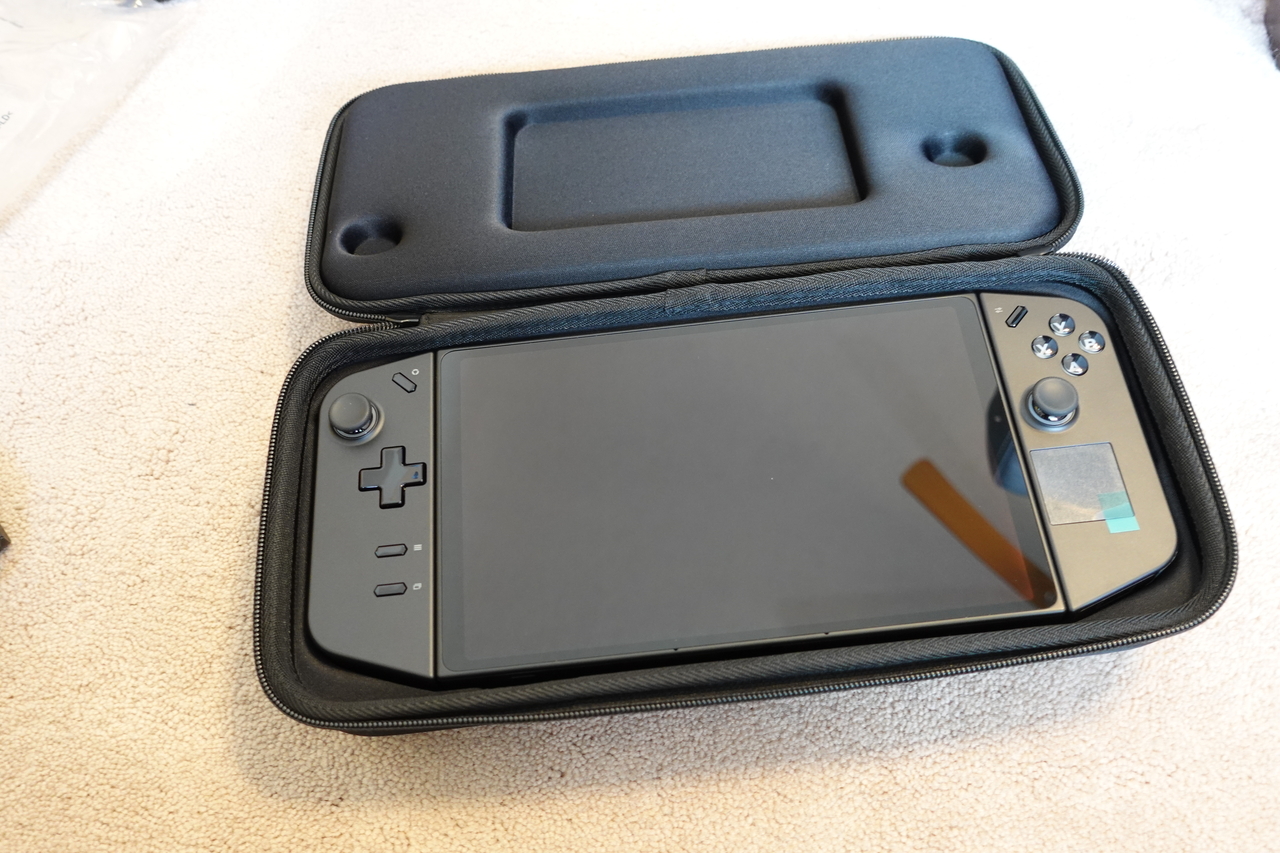Lenovo Legion Go

Update 2/25/2024: I have reaquired the Lenovo Legion Go and have been using it for two weeks now. The main reason: Call of Duty. I am dealing with Windows 11, but it’s nice to have portable Call of Duty.
A quick post about my short lived experience with the Lenovo Legion Go.
I have two Steam Decks, the original LCD and the new OLED. I love my Steam Decks, they are my favorite new toy in a long time. But, I was tempted by the shiny Lenovo Legion Go with its JoyCon-like controllers (with hall effect sensor sticks) and the big beautiful screen.
The Good
- The screen, while not OLED, is big and gorgeous. Colors are vibrant and because of the pixel density, the screen is nice and sharp. The 144hz refresh rate is a gimmick, no AAA game will ever take advantage of it because of the limited processing power. THe larger size is awesome for old eyes like mine.
- The build and feel of the machine in hand is great. It doesn’t feel cheap and feels like I’m holding something precious.
- The vibration/haptic feed back is substantially better on the Legion Go when compared to the weak vibration on the Steam Deck.
- The hinge is fantastic. It is solid and keeps whatever angle it is set at. I wish more handhelds would incorporate a hinge/stand.
- The tiny trackpad is actually quite useful for Windows.
The Not So Good
- The battery life is truly meh. From playing Dave the Diver, which is not a demanding game, I estimate the Legion Go would last 2.3 hours. The Steam Deck OLED on the other hand would last an estimated 5.1 hours. (For those curious, 40 minutes of Dave the Diver reduced the battery on the Legion Go by 29%. The same play time reduced the battery on the Steam Deck OLED by 13%).
- Lenovo went overboard with the buttons. There are buttons all over the place and place in odd positions – some of them specifically for use with their FPS Mode (more on that later). The buttons are also very easy to click, so I ended up clicking a couple of them over and over by accident.
- FPS Mode is gimmicky. I’m sure over time I could get used to it, but to hold a mouse like a gun just feels weird.
- The placement of the Legion buttons are in the place where Start and Select would usually go. It’s a really odd design decision by Lenovo – though, the placement of the buttons can be changed in software now.
- The general shape of the Legion Go seems to be form over comfort. The bottom left and right of the device digs into the meat of my palms making for an uncomfortable way to play for long periods of time.
- The speakers are tinny and weak compared to the Steam Deck.
- This thing is heavy.
- Windows 11 is not built for handheld devices. The whole experience of the Legion Go is the same as with a Windows machine – and that can be quite painful at times. The setup time for the Legion Go is hours because of the software updates – not just Windows Updates, but having to go to the Lenovo website to download drivers. This is compared to the setup process of the Steam Deck that is less than 15 minutes.
Final Words
In the end, I returned the Lenovo Legion Go for two main reasons. First and foremost is the terrible battery life. What good is a portable handheld gaming machine if I have to be tethered to a power source? Second is the whole Windows 11 experience on a gaming handheld. The tiny trackpad is quite useful in Windows, it made me not need to pair a mouse to the device. Having said that, having to deal with Windows in any fashion when trying to play a game is not optimal.
The Lenovo Legion Go is a tiny Windows 11 laptop that has detachable controllers slapped on the side. It’s a different beast than the Valve Steam Deck OLED which is a portable gaming console by design. When I pick up a portable handheld gaming device, I just want to game. I don’t want to deal with Windows.